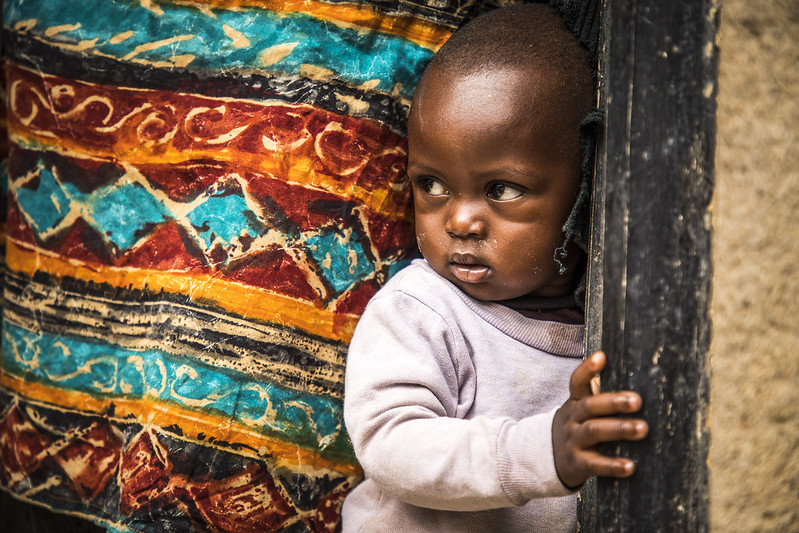High-Risk Diseases in Botswana and Their Impact
 Botswana, a landlocked country in Southern Africa, is known for its economic stability and reliance on diamond exports. The government maintains strong trade partnerships with nations such as the United States (U.S.) and the United Kingdom (U.K.), but economic disparities persist. Unemployment remains high at 27.6% and Botswana’s Gini index—a measure of income inequality—stands at 53.3, indicating significant economic inequality. Public health challenges further compound economic hardships. Diseases in Botswana are a challenge. The country faces a high disease burden, particularly from HIV, tuberculosis (TB) and Kaposi sarcoma. While the government has made strides in addressing these conditions, limited resources, health care infrastructure challenges and economic instability continue to hinder progress.
Botswana, a landlocked country in Southern Africa, is known for its economic stability and reliance on diamond exports. The government maintains strong trade partnerships with nations such as the United States (U.S.) and the United Kingdom (U.K.), but economic disparities persist. Unemployment remains high at 27.6% and Botswana’s Gini index—a measure of income inequality—stands at 53.3, indicating significant economic inequality. Public health challenges further compound economic hardships. Diseases in Botswana are a challenge. The country faces a high disease burden, particularly from HIV, tuberculosis (TB) and Kaposi sarcoma. While the government has made strides in addressing these conditions, limited resources, health care infrastructure challenges and economic instability continue to hinder progress.
HIV in Botswana: Progress and Challenges
Human immunodeficiency virus (HIV) remains a critical public health issue in Botswana. HIV attacks the immune system by targeting CD4 cells (T cells), weakening the body’s ability to fight infections and diseases. If untreated, it progresses to acquired immunodeficiency syndrome (AIDS), increasing vulnerability to opportunistic infections.
To combat HIV, Botswana’s Ministry of Health (MOH) partnered with the U.S. Centers for Disease Control and Prevention (CDC) to expand testing, prevention and treatment services. This collaboration has resulted in an extensive network of more than 200 HIV prevention sites nationwide. The Botswana AIDS Impact Survey collects critical data on sexual behaviors and risk factors, allowing policymakers to tailor interventions effectively. Additionally, the country has invested in widespread antiretroviral therapy (ART) programs to ensure HIV-positive individuals receive life-saving treatment.
Efforts have yielded significant progress. By 2021, Botswana achieved a 97% viral suppression rate among HIV patients on ART. Additionally, more than 334,000 people received antiretroviral treatment, contributing to a 9% decrease in HIV transmission over the past decade. Despite these advancements, challenges remain, including stigma, treatment adherence and reaching remote populations.
Tuberculosis: A Persistent Public Health Threat
Tuberculosis (TB) is an infectious disease that primarily affects the lungs but can also spread to other organs. TB is airborne and spreads when an infected person coughs or sneezes, releasing bacteria into the air. Symptoms include persistent cough, chest pain, fever, fatigue and weight loss.
Botswana has seen a rise in HIV-related TB cases, as individuals with weakened immune systems are more susceptible to the disease. The government has taken several measures to address TB, including expanding screening programs at hospitals and clinics, increasing access to diagnostic tools for early detection and ensuring the availability of effective TB medications, including aminoglycoside antibiotics.
Despite these interventions, co-infection rates of HIV and TB remain high, making TB prevention and treatment more complex. Ensuring consistent medication access, early detection and public awareness campaigns are essential to further reducing TB cases in Botswana.
Kaposi Sarcoma: Botswana’s Leading Cancer
Kaposi sarcoma (KS) is the most prevalent malignancy in Botswana. It affects the lining of blood and lymphatic vessels and is strongly associated with human herpesvirus 8 (HHV-8). KS is especially common among individuals with weakened immune systems, such as those living with HIV.
Kaposi sarcoma presents significant health risks, causing purple or dark-colored skin lesions, swelling, enlarged lymph nodes and respiratory complications if the disease spreads to the lungs. To address KS, Botswana’s government has established four public oncology centers that provide cancer treatment services, including chemotherapy and radiation therapy. However, the country continues to face significant challenges, such as limited access to advanced diagnostic tools, shortages of experienced oncologists and delays in treatment due to resource constraints.
Increasing investments in cancer research, early detection programs and expanded health care infrastructure is crucial for improving Botswana’s ability to manage and treat Kaposi sarcoma effectively.
Strengthening Health Care Response in Botswana
While Botswana has made notable progress in combating HIV, tuberculosis and Kaposi sarcoma, challenges remain. Limited health care resources, economic instability and high co-infection rates continue to strain the public health system. Ongoing government initiatives and international partnerships—such as those with the CDC—are vital in ensuring continued progress in fighting diseases in Botswana. Expanding health care infrastructure, medical training programs and public awareness campaigns could be key to improving disease prevention and treatment outcomes. By addressing these high-risk diseases, Botswana can potentially enhance public health, reduce economic strain and improve the quality of life for its citizens.
– Hayden Reyes
Hayden is based in Iowa, USA and focuses on Global Health for The Borgen Project.
Photo: Flickr
